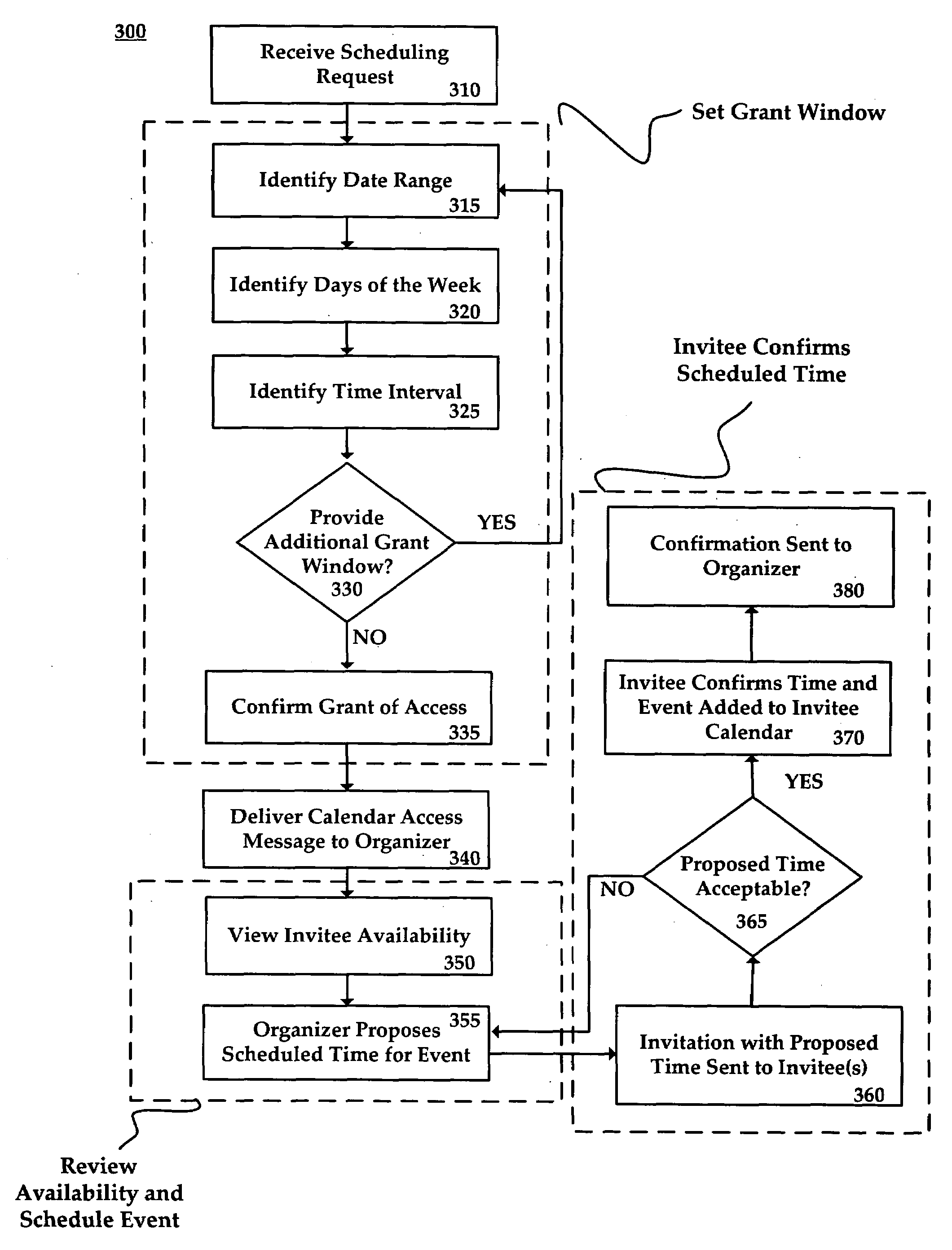System and method for providing temporary and limited grants of calendar access
a technology of calendar access and system, applied in the field of system and method for providing temporary and limited grants of calendar access, can solve the problems of consuming a substantial amount of time for the event planner and invitees, a scheduling dilemma, and another dimension of planning and scheduling difficulties
- Summary
- Abstract
- Description
- Claims
- Application Information
AI Technical Summary
Benefits of technology
Problems solved by technology
Method used
Image
Examples
Embodiment Construction
[0023]FIG. 1 illustrates an exemplary network 100 of computing devices with varying degrees of calendar functionality in accordance with an exemplary embodiment of the present invention. A variety of computing devices may be utilized in the practice of the present invention such as a personal digital assistant (PDA) 120, a variety of laptops (130 and 140), a desktop computer 150, and a cellular device 160. Other computing devices may also be implemented within the context of various embodiments of the present invention (e.g., thin clients, workstations, and portable handheld computing devices).
[0024]The functionality offered by an embodiment of the presently described scheduling application and related service may be used without particular limitations as to hardware device (e.g., desktop versus laptop versus PDA), software (e.g., calendar application or operating system), or means for connecting to communications network 170. For example, one device (e.g., PDA 120) may connect to c...
PUM
 Login to View More
Login to View More Abstract
Description
Claims
Application Information
 Login to View More
Login to View More - R&D
- Intellectual Property
- Life Sciences
- Materials
- Tech Scout
- Unparalleled Data Quality
- Higher Quality Content
- 60% Fewer Hallucinations
Browse by: Latest US Patents, China's latest patents, Technical Efficacy Thesaurus, Application Domain, Technology Topic, Popular Technical Reports.
© 2025 PatSnap. All rights reserved.Legal|Privacy policy|Modern Slavery Act Transparency Statement|Sitemap|About US| Contact US: help@patsnap.com



